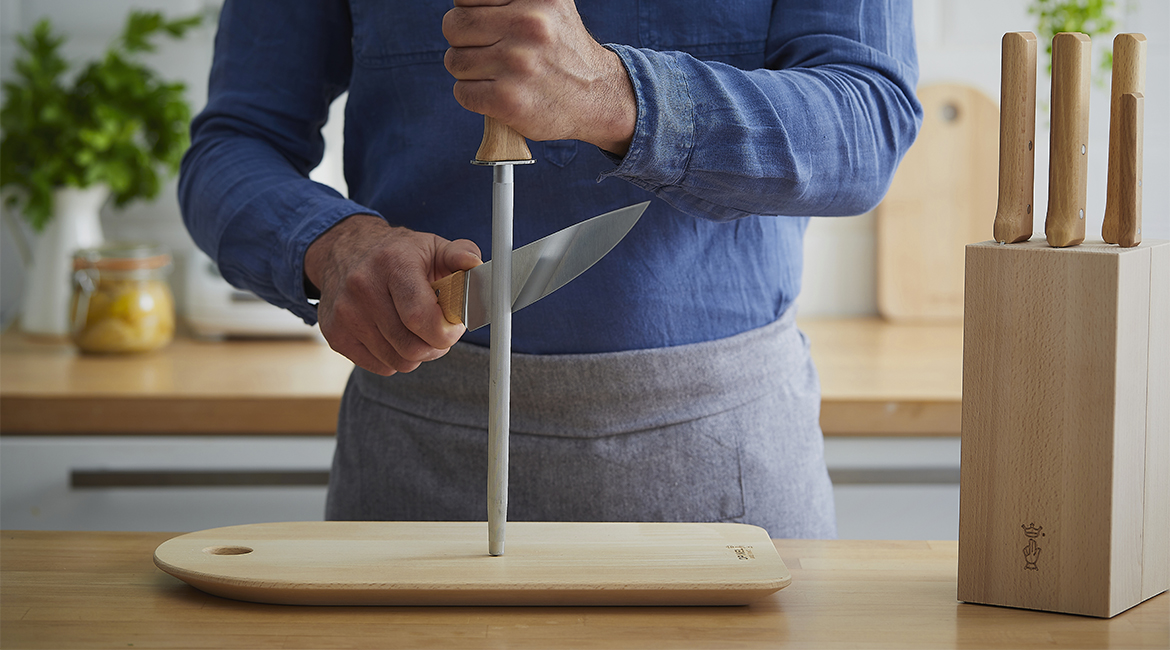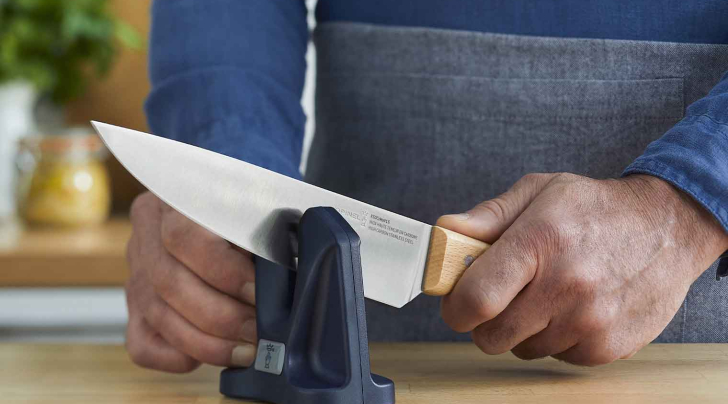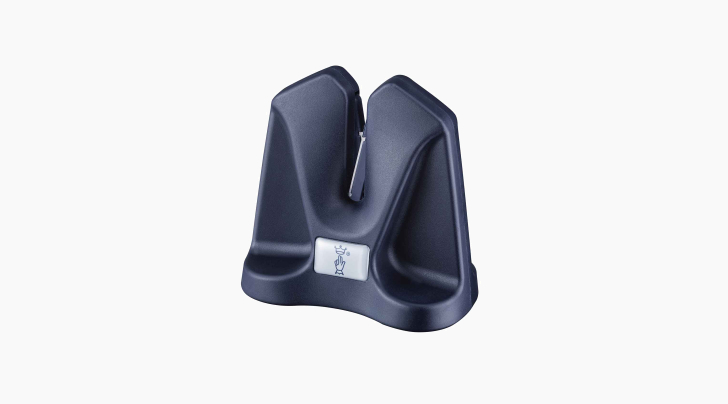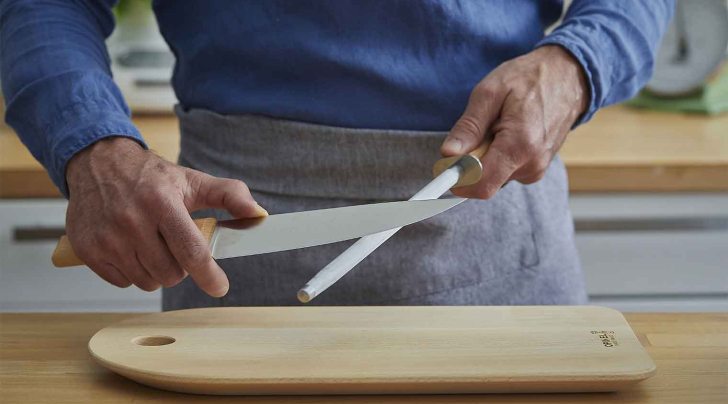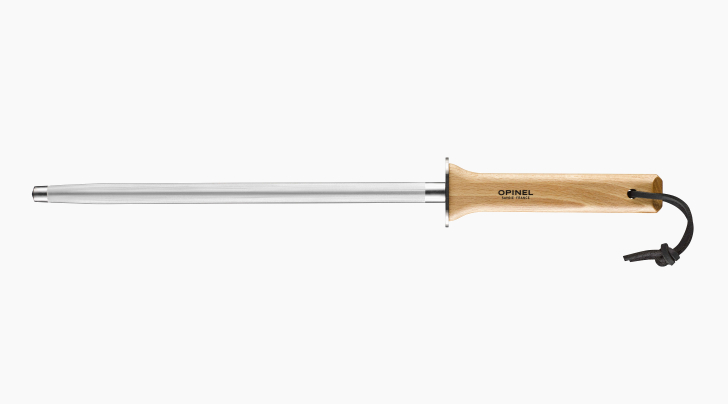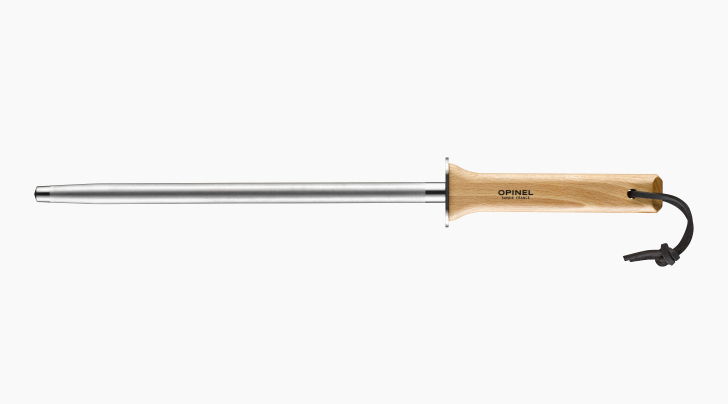An easy to use manual sharpener.
Maintaining a knife is essential to ensure a quality edge and to simplify its use. Regularly assailed by the food it cuts and the ceramic of the plates, it is important to sharpen it and to know the different tools as well as the different techniques. Opinel can tell you all you need to know about knife sharpening.
When should you sharpen your knife?
It basically depends on how it feels to use and the sensation you get from each. If the knife chops more than it cuts, it is time to sharpen it. Although there is no rule, we recommend doing it regularly to ensure the knife has the best possible edge.
You should also understand that it is possible to sharpen a knife before or after its use. Sometimes, when cutting food, you may find that the cutting edge needs to be sharpened. You just need to clean your knife, wipe it down, sharpen it, and wipe it again before continuing to cook. The knife should always be clean when sharpening so as not to leave residue on the tool.
How should you sharpen your knives?
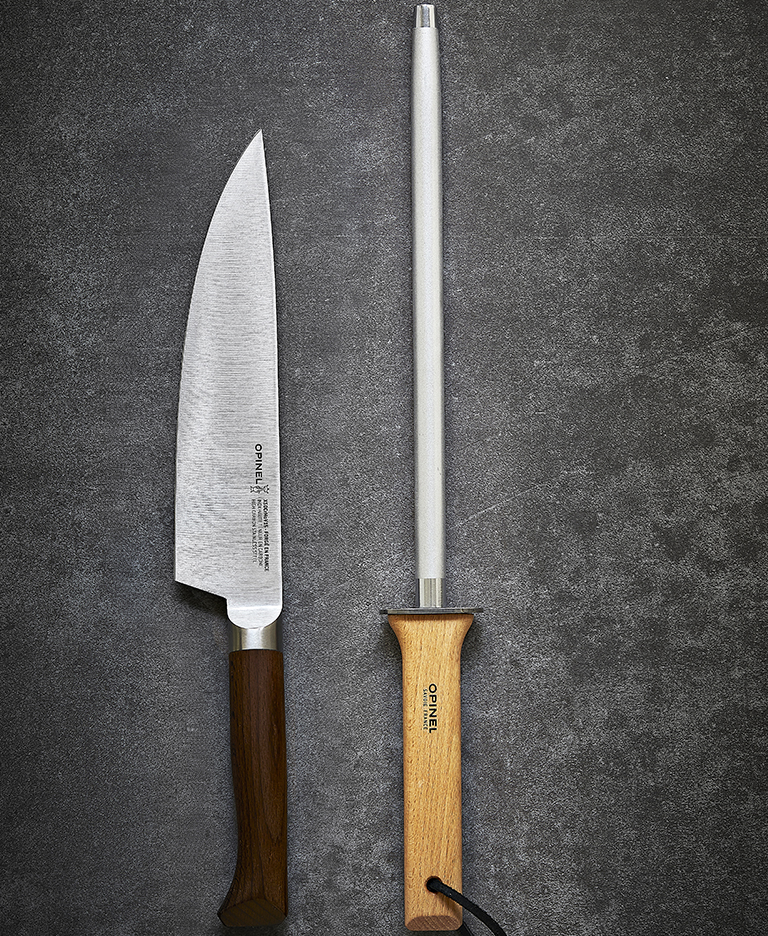
What types of knives can be sharpened?
Please be aware that some knives cannot be sharpened. This is the case with serrated knives, bread knives and peelers. It is important to take care of it each time you use it so as not to damage the cutting edge. On the other hand, kitchen, table, garden and children's knives which have a smooth blade can be sharpened.
It is possible to sharpen a stainless steel blade just as it is a carbon steel blade. However, since carbon steel has a slightly lower hardness, it will be easier to sharpen and fewer passes will be required.
What are the different sharpening tools?
To begin with, there are the sharpening rods, available in steel and diamond.
The diamond rod is used for knives that have a worn, damaged cutting edge that needs to be reshaped. It has small points that give it more abrasive properties.
The steel rod is used more for regular sharpening of knives and maintenance. It has longitudinal lines that you can feel when touched. It is magnetised, which allows the filings to stay on the rod and not on the knife after sharpening.
There are other tools for sharpening knives, such as stones or a manual sharpener. The latter, small and easy to store, helps maintain the cutting edge. Easy to use, just pass the knife 6 to 8 times between the two plates, without applying too much pressure, point down. In order to remove the metal particles that remain on the edge of the blade after sharpening, pass it 4 or 5 times with the tip of the knife upwards.
If you don't have any equipment at home, you can take two knives and sharpen them against each other, horizontally, with an angle of about 20°, following the cutting lines of the blades.
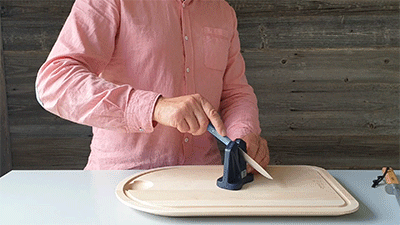
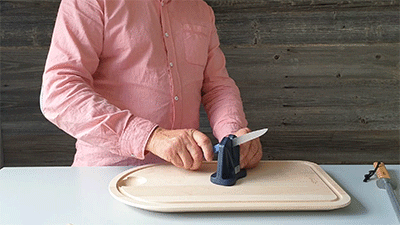
What are the different sharpening techniques?
There are 2 sharpening techniques for rods, whether they are steel or diamond.
The first is that taught in cooking schools. It is preferable to use a board so as not to damage the table or the support where the sharpening is performed. It is advisable to place the end of the rod in the groove in order to stabilise it. The rod should be in an upright position, held firmly. There should be an angle of approximately 20° between the blade and the rod. Slowly, sharpen the knife following the cutting edge, from the bottom of the blade to the tip. This movement can be performed 6-8 times on both sides of the blade.
The second technique is used more by butchers, for example. This time, the rod is not placed, it is held by the hand horizontally. Always with an angle of 20°, perform the same movement, following the cutting edge of the knife to the point in a measured manner. It is better to move the knife away rather than towards you for safety reasons, but both are possible.
These two techniques are suitable for kitchen knives, table knives or even folding knives. It is important to respect the 20° angle so as not to damage the cutting edge if the angle is too large, or the blade if the angle is too small. You should also be careful not to press too hard. For beginners, we recommend the first technique as it provides more stability.
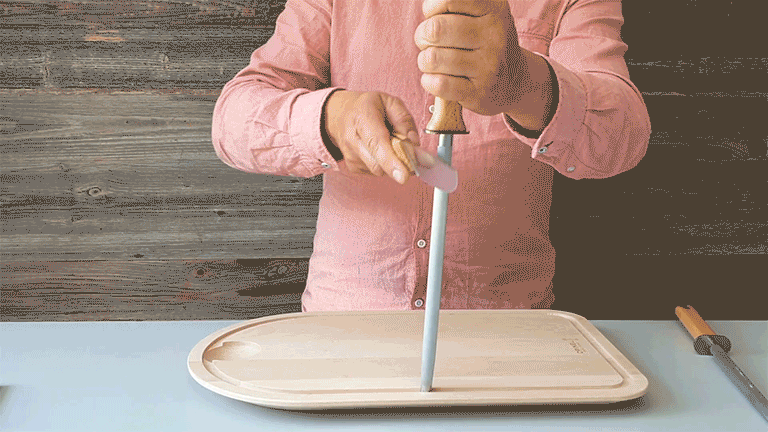
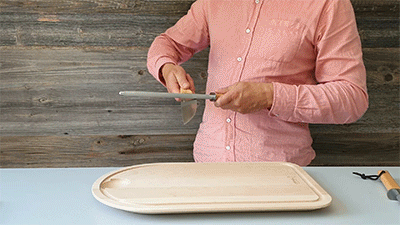
How do you maintain a rod?
A rod doesn't require a lot of maintenance. After each use, just wipe it off with a clean cloth to remove the remaining filings. Do not grease the rod. Indeed, the abrasiveness would be reduced, the knives would tend to slip and the sharpening effect would, therefore, be lost. If you grease the rod, you must use detergent afterwards.
Opinel rods are fitted with lace at the end of the handle which allows them to be hung up. It is also possible to store them in a drawer with other utensils.
A rod can wear out over time. It becomes smoother and gradually loses its sharpening ability. The diamond rod will tend to wear out faster than the steel rod since it is used to reform damaged cutting edges, and will, therefore, be more harshly attacked. However, it takes several years for this to occur.
